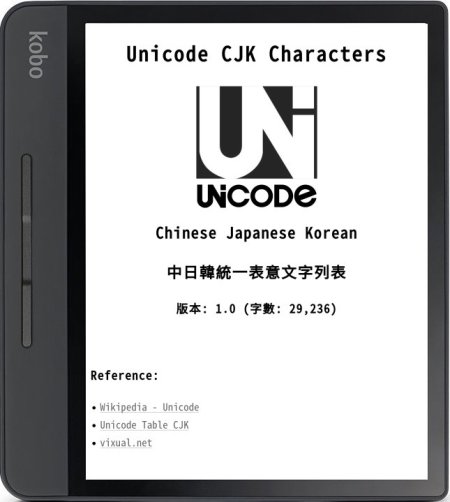Posts Tagged ‘ unicode ’
[转载][PHP]处理 UTF-8
转载自: PHP 最佳实践方法
此章节由 Alex Cabal 撰写,节录自 PHP Best Practices 并作为我们 UTF-8 建议的基础。
这不是开玩笑的,请小心与细心并前后一致地处理它。
PHP 至今在底层仍未支援 Unicode。而有许多方式可以确认 UTF-8 字串的处理是正确的,但通常不容易,还需要从上而下翻遍程序所有阶层,从 HTML、SQL 到 PHP。我们将会聚焦在简短的实践总结。
[PHP]如何得知输入的字串是否为 UTF-8 编码
使用下列函数,如果传回值为 true,表示输入的字串为 UTF-8 编码:
// Returns true if $string is valid UTF-8 and false otherwise.
function is_utf8($string) {
return preg_match('%^(?:
[\x09\x0A\x0D\x20-\x7E] # ASCII
| [\xC2-\xDF][\x80-\xBF] # non-overlong 2-byte
| \xE0[\xA0-\xBF][\x80-\xBF] # excluding overlongs
| [\xE1-\xEC\xEE\xEF][\x80-\xBF]{2} # straight 3-byte
| \xED[\x80-\x9F][\x80-\xBF] # excluding surrogates
| \xF0[\x90-\xBF][\x80-\xBF]{2} # planes 1-3
| [\xF1-\xF3][\x80-\xBF]{3} # planes 4-15
| \xF4[\x80-\x8F][\x80-\xBF]{2} # plane 16
)*$%xs', $string);
}
参考网页
- 如何得知输入的字串是否为 UTF-8 编码 (Perl)
- W3C I18N FAQ:Multilingual Forms
- PHP:md_detect_encoding
- PHP:Multibyte String Functions
[Perl]如何得知输入的字串是否为 UTF-8 编码
使用下列函数,如果传回值为 1,表示输入的字串为 UTF-8 编码:
#Returns 1 if $text is valid UTF-8 and 0 otherwise.
sub is_utf8 {
my $text = shift;
if( $text =~ m/^(
[\x09\x0A\x0D\x20-\x7E] # ASCII
| [\xC2-\xDF][\x80-\xBF] # non-overlong 2-byte
| \xE0[\xA0-\xBF][\x80-\xBF] # excluding overlongs
| [\xE1-\xEC\xEE\xEF][\x80-\xBF]{2} # straight 3-byte
| \xED[\x80-\x9F][\x80-\xBF] # excluding surrogates
| \xF0[\x90-\xBF][\x80-\xBF]{2} # planes 1-3
| [\xF1-\xF3][\x80-\xBF]{3} # planes 4-15
| \xF4[\x80-\x8F][\x80-\xBF]{2} # plane 16
)*$/x ){
return 1;
}
else{
return 0;
}
} #sub is_utf8
参考网页
[Perl]Big5/UTF-8 编码转换的模组
Big5 及 UTF-8 编码的转换方式有两种 (请先安装 Encode::compat 模组):
方式一
use Encode::compat; use Encode qw(from_to); my $string = "中文"; #Big5 转 UTF-8 from_to($string, 'big5', 'utf8'); print "$string\n"; #UTF-8 转 Big5 from_to($string, 'utf8', 'big5'); print "$string\n";
[转载]Unicode 脱逸序列转换
转载自: IT Inside
这里提供一段程式码,可以透过 JavaScript 将文字转换为 Unicode 脱逸序列。这段程式码,不论是对网页开发人员,还是对 java resource bundle 的翻译人员,都有很大的方便性。使用时只要将底下的程式码复制起来,以 html 副档名储存,就可以用 browser 执行了。
<META HTTP-EQUIV="Content-Type" CONTENT="text/html; charset=big5">
<script language=javascript>
<!--
function StringToUniCode(source) {
sret = "";
// Unicode 跳脱序列之格式为 \u00ff
for(var i=0; i < source.length; i++) {
var num = new Number( source.charCodeAt(i));
sret += "\\u" + num.toString(16);
}
return sret;
}
function convert(){
document.forms.content.result.value = StringToUniCode(document.forms.content.source.value);
}
//-->
</script>
将文字转成 Unicode 跳脱序列
<form name=content>
来源:<input type=TEXT name=source size=40 value="常用连络人"><br />
结果:<input type=TEXT name=result size=40><br />
<input type=button value=转换 onclick="convert()">
</form>
INFORMATION
![]()
我们解决了什么问题?我们创造了什么价值?

近期回响